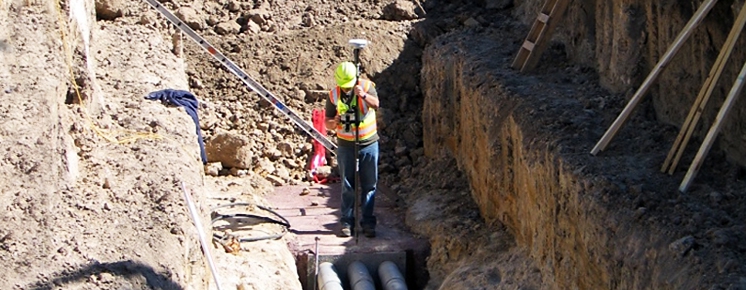
Image courtesy of the Texas A&M Transportation Institute
Improving cooperation among highway agencies and utilities for faster project delivery.
Identifying and Managing Utility Conflicts (R15B)
Challenge
When it comes to designing and implementing transportation projects, utility conflicts identified at the end of the design period or during construction can extend construction time, pose safety concerns, and increase costs. Locating, protecting, and relocating underground utilities creates significant delays to construction and utility services. Minimizing utility relocation during the design and development of transportation projects can lead to faster project delivery and lower costs.
Solution
The Utility Conflict Matrix (UCM) and its companion report, Identification of Utility Conflicts and Solutions, provide concepts and procedures to identify and resolve utility conflicts that public agencies and utilities can use to help improve the highway project development process.
Additionally, a one-day training course has been developed to help agencies incorporate the UCM in existing business practices so that utility conflicts are identified throughout the design process.
UCMs are designed to help agencies and utility companies identify the best and most cost-effective solutions. The SHRP2 UCM is also scalable to support a range of project sizes and conditions, in varying levels of project design. The standalone UCM, data model, and database are available on the TRB website along with a companion research report featuring best practices from State departments of transportation, as well as case studies that identify prevailing issues and proven solutions.
Benefits
The immediate benefits of the UCM process include proactive identification of both utility conflicts and alternative design solutions to minimize costs and foster greater communication among affected parties. Together, these improvements lead to more cost-effective processes with reduced risks. Ultimately the benefits of using a UCM on roadway and bridge construction projects include:
- Fewer contractor change orders and delay claims
- Reduced costs from construction delays
- Improved project development procedures based on anticipating and resolving utility conflicts early in the process
- Better communication among transportation agencies and utilities
- Reduced impacts on the public from construction-related delays
- Reduced impacts on the public from utility disruptions
- Improved worker and public safety from construction-related hazards
-

Save Lives
Timely location of underground lines minimizes potential safety issues to the public and construction workers.
-

Save Money
Earlier and more effective coordination reduces costs from construction delays and utility damage and relocation.
-

Save Time
Standard procedures and easy-to-use tools save time in identifying and solving utility conflicts early and throughout the entire design process.


